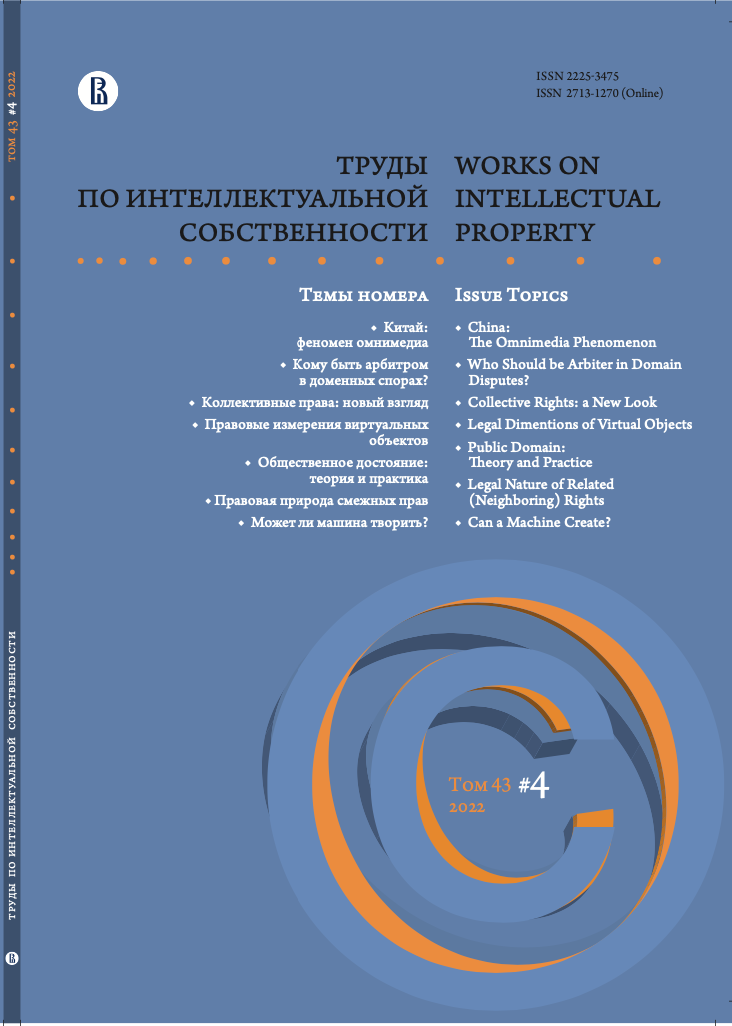MACHINE CREATIVITY AND THE LAW: TWO PARTS OF A WHOLE
Abstract
Machine creativity becomes one of the most important technologies in the creation of intellectual property objects. This happens in many creative industries, both by pointing out the use of technology and by withholding this information. As a result, human creativity can be replaced by machine creativity.
It can be assumed that in the future all creative specialties can disappear and become as exotic as the handmade master. They will be valued in certain social circles, but in mass circulation will be used machine labor, which will be more efficient and economical than man.
But nonetheless, there are unresolved legal issues in the regulation of machine art. This is due to the fact that legislators in many countries are careful to regulate new facilities so as not to jeopardize the further development of this area. A similar example existed when computer programs were created.
In the article the author describes the process of creation of creative object by means of machine learning. On this basis, its main elements are identified and a legal failure at the data collection stage is detected. In this context, two main approaches to the use of intellectual property are examined. The shortcomings of the approaches when creating machine learning are identified and an alternative is proposed.


